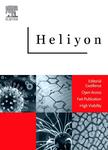版权所有:内蒙古大学图书馆 技术提供:维普资讯• 智图
内蒙古自治区呼和浩特市赛罕区大学西街235号 邮编: 010021

作者机构:Faculty of Economics Technical University of Liberec Voroněžská 13 Liberec 460 01 Czech Republic Institute for Nanomaterials Advanced Technologies and Innovation Technical University of Liberec Studentská 1402/2 Liberec 461 17 Czech Republic Faculty of Mechatronics Informatics and Interdisciplinary Studies Technical University of Liberec Studentská 1402/2 Liberec 461 17 Czech Republic Zittau Görlitz University of Applied Sciences Faculty of Business Administration and Industrial Engineering Theodor-Körner-Allee 16 Zittau 02763 Germany
出 版 物:《Heliyon》 (Heliyon)
年 卷 期:2025年第11卷第3期
页 面:e42309页
主 题:Bass model Diffusion of innovation Nanotechnology SIR model
摘 要:Today, when nanotechnological innovation, in particular, faces stringent regulations, the question arises concerning a tool that can quantify individual interventions and thus complement current knowledge in the diffusion theory of innovation. This paper examines the complex nature of innovation diffusion in a rapidly evolving technological environment. The research presents current knowledge in the field linking diffusion of innovation theory and the basic epidemiological model of SIR (Susceptible, Infected, Recovered). Epidemiological models, originally developed to study the spread of infectious diseases, offer intriguing parallels to innovation diffusion due to shared characteristics in propagation dynamics. Integrating the SIR epidemiological model into the current theoretical framework allows the SIR model to be considered as a tool capable of filling current gaps in the literature. Nanotechnological innovations are chosen because of their significant impact on society, which faces unique market entry challenges. Within the framework of high interdisciplinarity, nanotechnologies, like viruses, tend to mutate into different industries where their infectivity varies. The case of nanotechnology serves to illustrate the usefulness of the proposed model and shows how factors that influence the spread of viruses can similarly affect the adoption of technological innovations. Similar characteristics in the propagation framework between innovations and viruses can serve as one of many arguments for the use of the SIR model in this field. Using an integrative review, aspects that have the potential to add to the SIR model in the current literature are identified. By combining epidemiological findings with innovation theory, the paper contributes to a richer and more integrated understanding of the phenomena of diffusion of nanotechnological innovations. The motivation is to open a debate regarding the ability of the epidemiological model of SIR to reveal the impact